Kyoto! Nigishi Market – Aritsugu Knives – Saba Zushi
Our article on Arigitsu Knives is an oldie but goodie fro 2009. We look forward to visiting again soon. 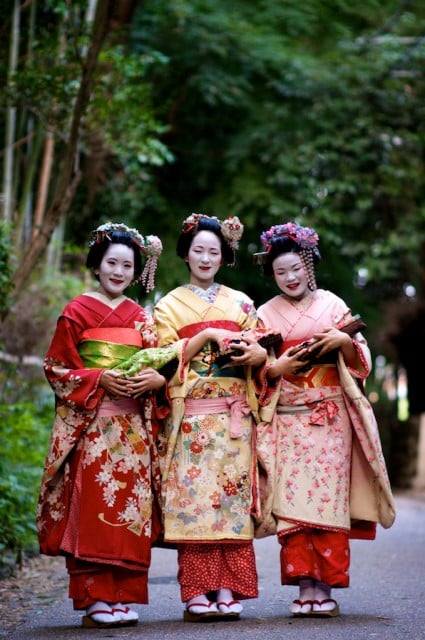
Beautiful Kyoto, Japan
Kyoto is embraced with the beauty of Japan’s past. History is preserved in the city’s old buildings, valued temples and scenes of traditional life that still roam the narrow streets.
Going to Japan we had no wants of trinkets, souvenirs, or other little nick-knacks to bring home. We only desired for the experience of Japan’s modern savvy and its treasured past, and to acquire two things. In Kyoto we would experience a bit of Japan’s past and find the first of our two treasures; a knife crafted in Japan.
Our original plan was to go to Sakai, just outside Osaka, where it is the heart of Japanese knife making. However without proper introductions it would be difficult to get in behind the scenes, plus a day searching for the knife makers would seriously cut into our food exploring time.
In order to make the best use of our short time in Japan, we went with Plan B; ask the locals and find a great knife merchant. Whether we were in Tokyo or in Kyoto, one name came up repeatedly. Aritsugu at the Nishiki-Koji Market in Kyoto was knife maker to find.
This was a double bonus for us. We’d been told Nishiki (as the locals call it) is the place to go to in Kyoto to find great street food and stalls, so it was already on our list of places to visit. Then to add on the prospect of being able to find a great Japanese knife, my heart was starting to pound. I’ve always been fascinated Arigitsu Knives.
Nishiki Market in Kyoto, Japan
Nishiki Market was everything it had been touted to be. Several blocks long down a narrow street in the heart of Kyoto, it had a roof overhead to protect from the elements, and was packed continuously with street stalls mostly focused on food: noodle shops, pickled goods, fish mongers, fruit vendors, mochi places, places-we-have-no-idea-what-they-are-called-but-had-really-tasty-stuff.
We ate, sampled, sniffed, and stared at all of the beautiful foods at Nishiki Market. Well, we tried not to stare too much, since we’ve found the Japanese tend to be super polite in the not-staring department and we didn’t want to offend.
In several of the stalls we found one of the great culinary specialties of Kyoto, saba-zushi.

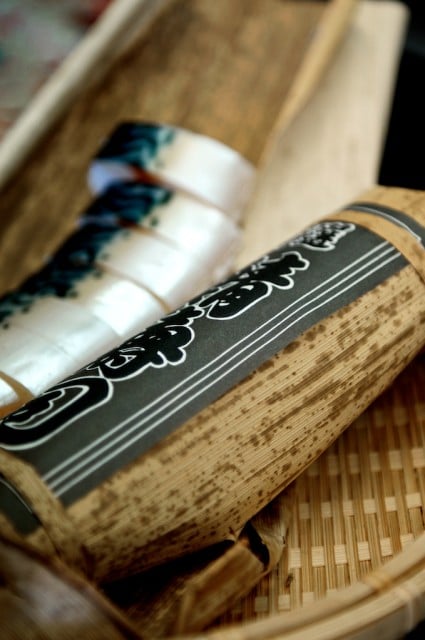
Arigitsu Knives, Kyoto Japan
We continued working our way through the market, until the glint of steel caught my eye. “ARITSUGU!” bellowed my head in a deep, gutteral, Japanese rhythm.
Diving into the Aritsugu knives shops, we had no knowledge of their history or quality. We were following the recommendations of people we trusted and would be basing our purchases off of gut feelings.
After wandering and admiring the store for a bit, I started talking to one of the sales ladies, me in my broken Japanese, her in her broken English. She would bring out several different type of blades and explain their differences: carbon steel, stainless steel, combinations of both, double edged, single edged, and all the different shapes.
Originally I was intent on buying a Japanese style knife, but Aritsugu also makes western style chef knives, and the second I felt one it merged into my hand extending effortlessly and with purpose. “Be true to thyself” echoed in the back of my head and I knew this was the knife for me.
After nodding my acceptance and handing over a little less than ¥20,000 (@ $225) for a roughly 9 1/2″ chef knife, they finished sharpening it, showed me how to care for and sharpen it myself. Then they asked if I wanted it engraved with my name. After a moment’s thought, a glimmer came to my eye and I pointed at the tattoo on my forearm – “Cowboy” written in katakana.
They smiled, nodded and engraved the steel that would become my own. While the craftsman engraved, in Japanese I haltingly told the curious shopkeepers that it was the name my dad called me growing up. Their faces beemed and lit up with approval. “Ahh, you cowboy!” they exclaimed, mimicking a lasso being thrown. It seemed they were happy to a have one of their knives going home with me.
After a final cleaning and wipe, they finished the sale in classic Japanese artful attention to detail. After boxing the knife, she delicately wrapped the box in paper, then taking the wrapped box, she laid it in a cloth with their name written in Kanji and containing their crest, and carefully tied the box in the cloth. Then everything was placed in a bag then they bowed and handed me my knife. I bowed in return and thanked them, leaving the shop to their chorus of thanks.
It was only after we got home that I researched more about Arigitsu Knives. Like saba zushi, Aritsugu’s history dates back to the 16th century. The original founder opened shop and began crafting blades in 1560, and at one point was making swords for the Imperial family. Today they have transitioned to culinary knives (among other similar tools) and are probably one of the most well known knife makers within Japan, debatably one of the best. If you’re curious for more, zknives tells it with much more knowledge than I can.
Whether or not they are the “best” I can’t tell you, however what I can tell you is that the knife cuts beautifully. As much as I loved my Wusthofs (and I had recently sharpened my chef knife to its finest level since I’ve owned it) they are nothing compared to the way this knife from Aritsugu cuts. Slices are effortless and dead straight, with only a slicing motion and virtually no pressure beyond gravity pulling the knife through the food. The knife is actually lighter than my Wusthof chef knife, even though it is an 1 1/2 – 2″ longer and as tall of a blade. After only a couple days of cooking I am already in love. If the blade holds its edge as well as people have said it will, I will be dumb-foundedly awed.
The Arigitsu Knives I bought has a carbon steel core and cutting edge with the outer surfaces being wrapped in stainless steel on all but the last 1/2″ of the cutting edge. If you look closely at the pictures of the knife, especially the bottom picture of the collage of 4, you can see where the stainless steel ends and the carbon steel begins. The carbon steel edge will rust if not taken care of, however Aritsugu can rest assured that this knife will be respected and well cared for.
Thank you Aritsugu, for your care and craftmanship. I shall always cherish, value, and use your pounded, tempered, and honed steel. どうもありがとうございます.
**A note for those who would like to purchase an Aritsugu knife without having the chance to go to Japan: They tend to be hard to find, and when you do find them they usually don’t have the finished sharpening. It is a fairly common practice amongst Japanese knife makers, maybe with the understanding that a serious person who buys their knife will know how they want it sharpened and will do so after they have received it. Just so ya’ know.
-Todd
hope you enjoyed our article on Arigitsu Knives . Read all our Japan travel articles here.

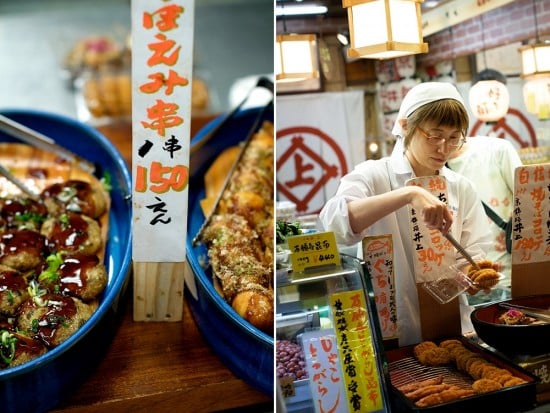
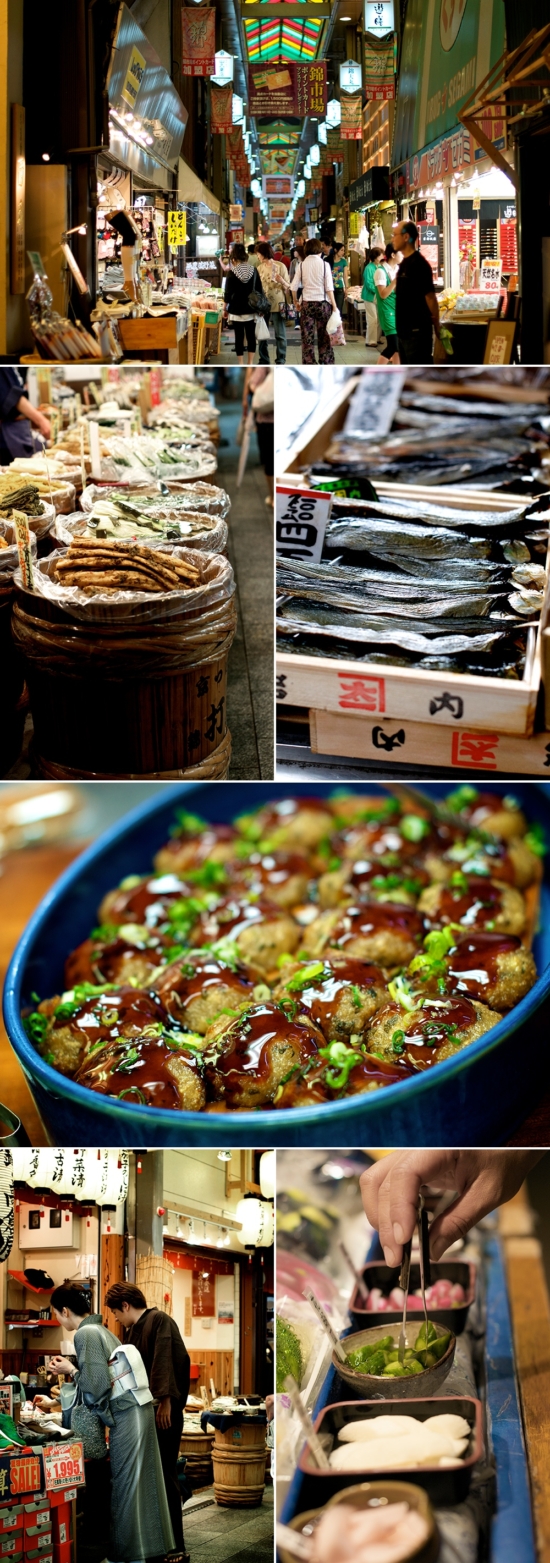
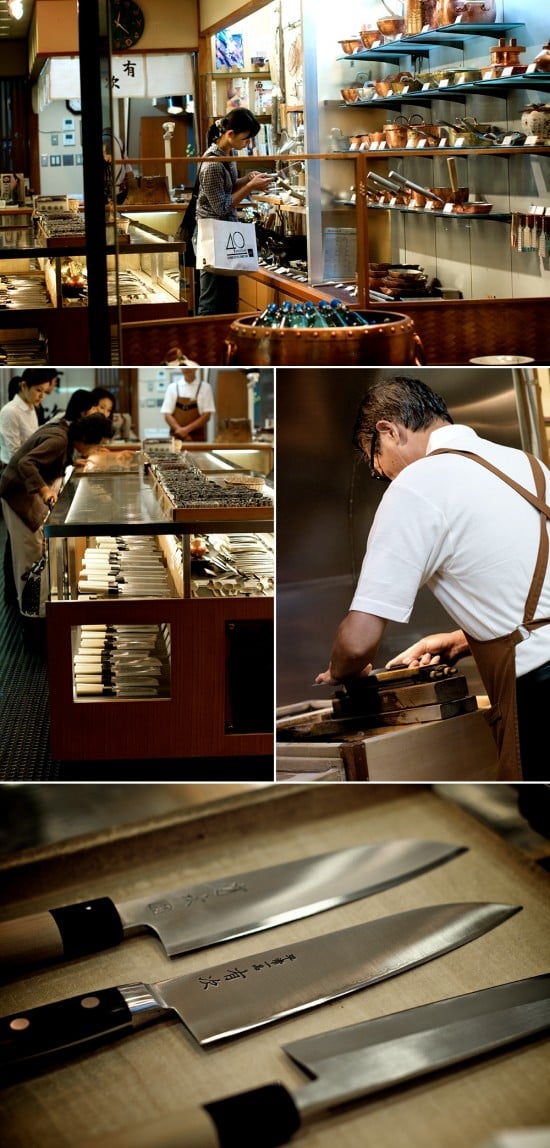
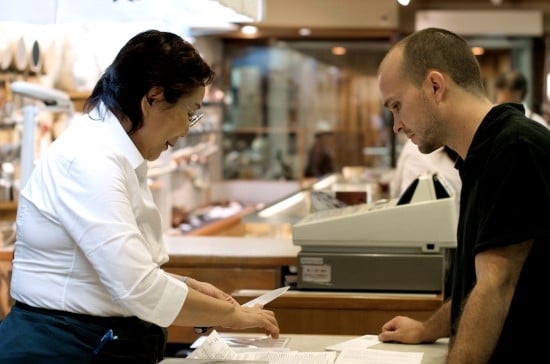
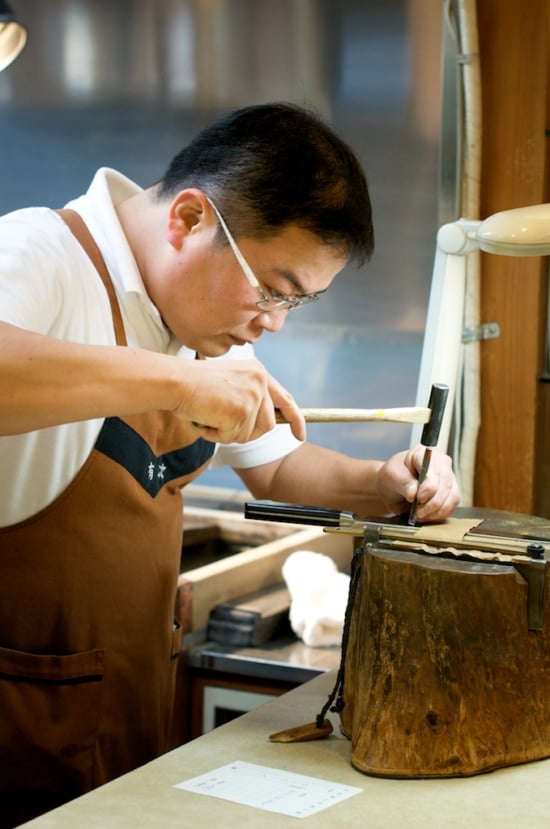
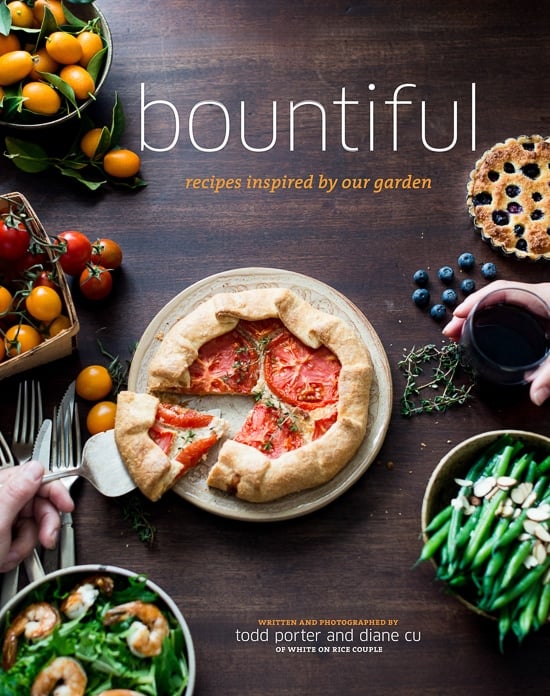
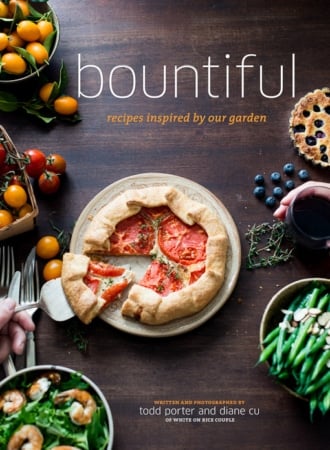


I got a Japanese knife from this store too! It’s engraved with my name (at least, the Japanese characters that if said aloud, would sound like “Ash-ree” instead of Ashley). I don’t use it a lot, as I didn’t buy the most practical knife. But it’s SO cool. If I ever go back, I will buy something a little more durable. That market was incredible. I remember finding very expensive, but the most perfect strawberries there. And beautiful vats of colorful pickled things.
You know me and Marc wandered around the same knife store. Thought about you guys because i read this post before i went. Beautiful stuff. I wanted to buy the whole store!
Love, love the photography on this post.
Gosh, that is a thing of beauty. I’m sure it will be a treasured heirloom. Incidentally, I’m also reviewing a book called “Japanese Kitchen Knives.” Drooling over these (expensive) gems!
May I recommend another maker whose knives are very much on par but significantly less expensive that Aritsugu, and is only blocks away…
If you find the east corner of the Daimaru on ShojiDori, and go south on that street, just before the Bukkoji temple is the very humble shop of Hayakawa. You will be able to spot the sign of a pair of japanese scissors on both sides of the street. The maker is 72 and has all sorts of wonderful things from deba to santoku to hakiri and Guytou. His english is pretty limited but I had no problems buying 6 knives from him yesterday and taking a friend back today who bought another 4.
I have purchased knives from both Aritsugu and Shigehara, so I’m not against anyone, just in favour of a small, traditional shop that produces really great knives 🙂
This was a return trip for me ( in Kyoto now, from Toronto, Canada) and my second time in the shop (last was 11 years ago!).
I very highly recommend them.
Just wanted to say I’ve been really enjoying the Japan series. I’m off on my fifth trip in November, but always love reading about other people’s experiences, especially yours on buying a Japanese knife! I plan to buy one too (the personalisation of it is a great idea)…
i love the photos from the food stalls. and i love those octopus balls, yum.
It’s great to see the great info that you put in this post! I love Japanese knives and think that they are the best!! My favourite is still Santoku. 🙂
I think I’m going to be in Kyoto in October, will definitely have to check some of these places out. Also kind of a funny coincidence because I just posted a knife review (though your story is much better than mine!).
Like Allison @ Sushi Day, I’m swooning too. What an incredible knife-finds-cowboy story. What an incredibly special experience. Buying that knife must have been a spiritual moment for you both. Knives and chefs bond, that’s for sure.
So glad you’re both back. Can’t wait to hear more about your travels. xoxox,Brooke
Glad the contest for the food bloggers camp trip giveaway lead me to your site. Really enjoy it!
LOVE your site! I’m Italian and Texan so this is inspiring me to be more adventurous in my cooking (and my own blog!) Thanks 😀
I’m so glad I found your blog by way of Twitter i.e. #FFs through Kamran maybe. Beautiful photos! I have Shun knives myself. I could only afford them after I got Crate & barrel gift cards.
Oh those knives! *swoon* As if I needed any more reason to travel to Japan… obviously, I’ll have to go there some day.
Absolutely loved your posts about your Japan trip – beautiful pictures, as always, and wonderful descriptions.